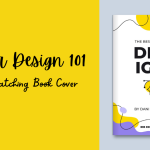The key component that keeps readers interested in your story and turning pages to see what happens next is suspense. Suspense may change your storytelling, whether you’re writing a thriller or simply want to keep readers interested. One step at a time, let’s explore how to become an expert in the art of suspense.
You may also like: Famous Authors Who Used Pen Names (and Why They Did It)
What is Suspense in a Story?
The exciting tension that leaves readers wondering, “What will happen next?” is known as suspense. Readers are kept on the edge of their seats and encouraged to continue reading by the sense of suspense and uncertainty. Keeping readers emotionally invested in the plot and generating suspense keeps them interested.
Understanding the Basics of Suspense
Key Techniques to Build Suspense in Your Story
Creating Uncertainty
One effective technique to increase suspense and keep readers guessing and on the edge of their seats is to create doubt. Readers are more interested in learning what happens next when characters are faced with uncertain consequences or are forced to make difficult decisions without all the facts. By omitting important details, giving false hints, or introducing abrupt changes in a character’s situation, you might create mistrust. Readers are kept interested and motivated to keep turning the pages in order to find out the truth because of this feeling of unpredictability.
Developing Tension and Conflict
Creating tension and conflict is frequently the first step in developing suspense. When characters encounter difficulties or setbacks that jeopardize their objectives, tension develops and readers get uneasy. The plot remains dynamic and surprising through conflict, whether it be external (opposing forces or individuals) or internal conflict (mental conflicts). Authors can increase suspense and keep readers interested by gradually raising the stakes, such as by putting characters under more strain or introducing unforeseen obstacles.
Using Cliffhangers Effectively
Cliffhangers are an effective method for creating tension, keeping readers interested by leaving key moments unanswered. To use cliffhangers effectively, finish a chapter or scene at a pivotal point, such as a shocking revelation or a character in peril. This keeps readers intrigued and anxious to learn what occurs next. Cliffhangers, when employed correctly, generate a sense of urgency, compelling readers to turn the page. However, avoid employing them excessively, as this can diminish the suspense over time.
You may also like: Top 10 Rhetorical Devices Every Writer Should Know
Setting the Right Atmosphere
Leveraging Mood and Tone
Mood and Tone: Creating the correct mood and tone to immerse readers is essential when writing suspense. Mood creates an emotional milieu, influencing how readers feel, whereas tone conveys the writer’s perspective towards the story. Using descriptive language, sensory details, and tempo, authors can create a tense or frightening mood. Small hints, subtle shifts of tone, and careful word choice all contribute to tension, keeping readers on edge and anticipating what might happen next.
Descriptive Language and Imagery
Descriptive language and imagery are essential in establishing an atmosphere that draws readers into your story, particularly when creating tension. Vivid descriptions of sights, sounds, and even smells can be used to evoke a specific mood, such as a dark, frightening forest or a tight, silent apartment. Strong imagery allows readers to feel what the characters feel, helping them anticipate what will happen next. This strategy creates tension by dragging readers deeper into the scene, increasing their curiosity and sense of foreboding.
You may also read: Book Review: Lord of the Flies by William Golding
Building Suspense through Pacing
Controlling the Story’s Pace
Controlling the speed of your story is essential for establishing tension. Slow down during pivotal moments to add descriptive details or reveal the character’s inner thoughts. This allows readers to absorb the ambiance and builds their expectation. In contrast, accelerating the pace during action scenes using short words or fast dialogue keeps the intensity high and the readers on edge. Balance rapid and slow passages to bring readers through a suspenseful and fascinating experience.
Delaying Information
Delaying vital information is an excellent strategy to build suspense. This strategy entails progressively releasing information to keep readers interested and engaged. By withholding critical information, you inspire readers to speculate about what might happen next, creating tension while they wait for answers. For example, rather than disclosing a character’s genuine motivations right away, drop hints or demonstrate contradicting behaviors. This delayed unveiling keeps readers wondering and builds suspense through the careful timing of information.
You may also read: How Can I Get a Book Published?
Creating Mysterious Characters
Creating Unpredictable Characters
Using Flawed Protagonists
Flawed protagonists can provide complexity and suspense to your story. When your main character has flaws, doubts, or moral issues, readers are intrigued in how they will overcome obstacles. These weaknesses make the character unpredictable, which adds drama as they make judgements. The ambiguity about whether the protagonist will succeed or fail keeps the audience interested, making the tension feel real and exciting. A flawed protagonist frequently leads to unexpected turns, heightening the suspense in your story.
Foreshadowing and Red Herrings
Foreshadowing Techniques
Foreshadowing is an effective strategy for creating suspense in your story by hinting at future occurrences. Some frequent techniques include providing subtle cues in language, symbols, or setting features. For example, describing a storm early on may presage a dramatic event later. You can also use character behaviors or dreams to foreshadow future events. This builds anticipation and keeps readers engaged as they begin to solve the story’s developing mystery.
Red Herrings to Mislead the Reader
Red herrings are ingenious misdirections designed to trick the reader and keep them guessing. In suspenseful stories, writers add clues or elements that appear vital but are subsequently revealed to be inconsequential. This strategy diverts the audience’s attention away from the plot twists and critical events. Authors can use red herrings to create confusion and suspense, ensuring that the reader’s attention is constantly moving, making the final reveal more impactful. It’s an excellent approach to maintain tension throughout the story.
Conclusion
Mastering suspense requires effort, but these tactics may help any writer create tension and intrigue. You will keep readers engaged from beginning to end by carefully balancing uncertainty, pacing, and character complexity. Remember that suspense is about playing with the reader’s expectations and emotions. Experiment with these strategies to see what works best for your tale.
















